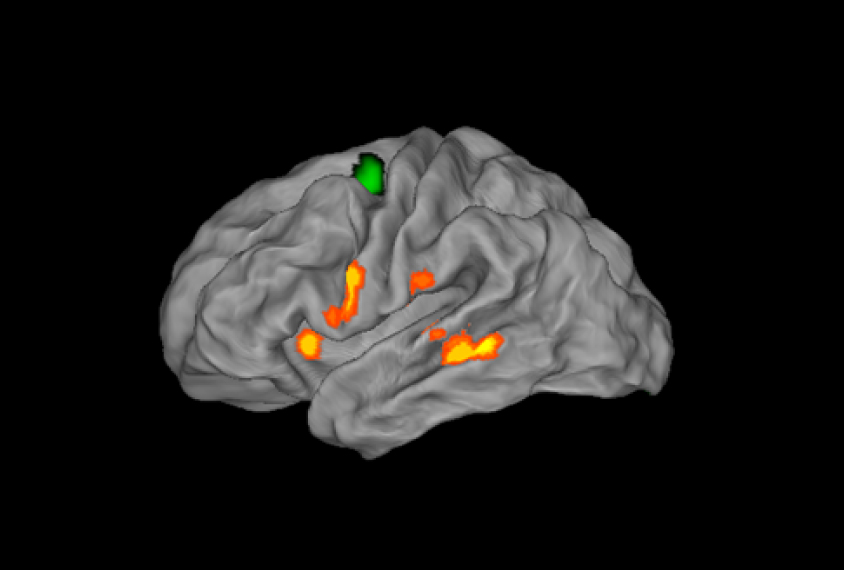
THIS ARTICLE IS MORE THAN FIVE YEARS OLD
This article is more than five years old. Autism research — and science in general — is constantly evolving, so older articles may contain information or theories that have been reevaluated since their original publication date.
About 1 in 4 children with autism speak few or no words, and those who do speak often have trouble following complex language. A new analysis of 22 studies of people with autism points to a possible anatomical source for some of these language problems1.
Most people rely largely on the brain’s left hemisphere to decode the meaning of single words and short phrases, drawing from the right side of the brain only for complexities such as interpreting words with multiple meanings. Small studies have suggested that language tasks are processed in a radically different fashion in the autism brain, relying heavily on the right hemisphere for almost all tasks.
But the large new analysis shows that the anatomy of language in autism actually parallels that seen in the typical brain: It, too, varies by the complexity of the task, though the precise pattern and areas of activation differ.
When the task is easy, the brain recruits both hemispheres and the person with autism performs well, suggest findings published 11 January in Autism Research1. But the right hemisphere bears the brunt of the work when the person performs poorly on a task that would be doable for most typical people — and brain activity deviates from the patterns seen in unaffected individuals.
“As the complexity of a task increases, we see more atypical processing,” says lead researcher Rajesh Kana, associate professor of psychology at the University of Alabama at Birmingham.
Common denominator:
When the right hemisphere springs into action during a complex task, it may be filling in for deficits in the left hemisphere’s language regions. But researchers don’t know whether the right hemisphere activity helps people with autism perform the task or is merely a sign of a language processing problem, says Helen Tager-Flusberg, director of the developmental science program at Boston University, who was not involved in the study.
Kana’s team analyzed published studies that used either functional magnetic resonance imaging or positron emission tomography to measure brain activity in teenagers and adults during language tasks. Combined, the studies included 328 people with autism and 324 controls.
Each study mapped the brain activity that occurs when someone has to, say, understand a pun or draw inferences from a story. The researchers fed data from each study into a computer program that searched for autism-specific and typical patterns of brain activity.
The results revealed that the tasks activate a core set of language areas in the left hemisphere in both the people with autism and controls. These include two regions involved in speech: Broca’s area in the left frontal lobe and Wernicke’s area in the left temporal lobe.
Hallmark feature:
When the researchers examined the relationship between brain activity and task performance, they found that both hemispheres tend to be equally active when people with autism perform as well as controls do. But the right brain dominates when the affected group performs poorly, suggesting that people can’t rely on the left-brain strategies that typical people use.
“On difficult tasks, people with autism are drawing inferences from the right hemisphere and they’re still not able to do that task well,” Kana says. “So [the right brain activity] probably reflects the difficulty people with autism face doing these tasks.”
The findings add weight to the idea that right-brain activity during language tasks is a hallmark feature of autism, Tager-Flusberg says.
But Kana notes that the 22 studies focused on only a small segment of the population. “Most of these studies looked at small numbers of adults and included very few female participants,” he says. “Maybe future studies should look at kids, developmental differences and sex differences in larger populations.”
The researchers plan to explore whether the patterns of brain activity in people with autism occur in other conditions, such as attention deficit hyperactivity disorder and schizophrenia.
“We don’t know whether [these patterns] tell us more about autism or about neurodevelopmental patterns more broadly conceptualized,” Tager-Flusberg says.
By joining the discussion, you agree to our privacy policy.